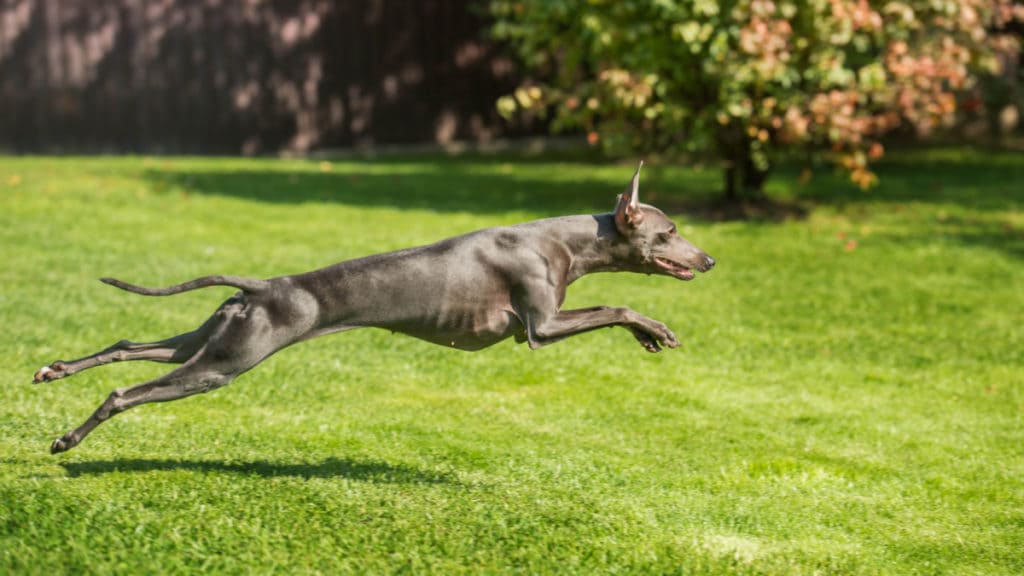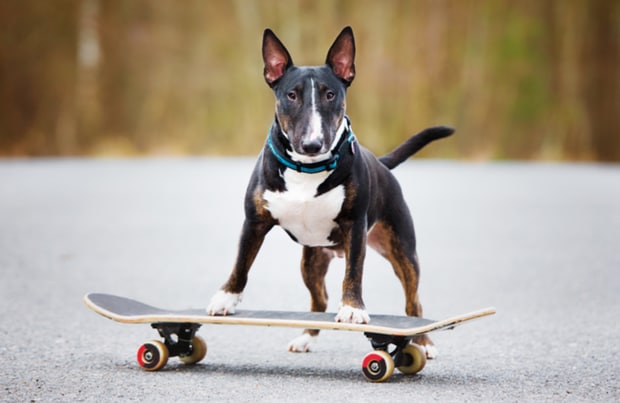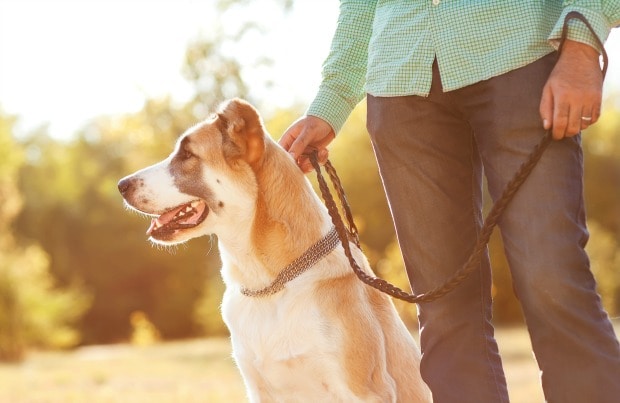Everyone knows Greyhounds are fast, but exactly how fast are they? Most place their maximum speed at around 45 mph—a bit slower than a quarter horse, and much slower than a cheetah.
The Greyhound’s running style is actually like that of a cheetah’s, employing what’s known as the double-suspension gallop. Unlike horses, which have only one period during their galloping stride in which all four legs are off the ground at once (the period when they are all contracted beneath the body), Greyhounds and many other fast dogs have two periods of suspension during their fastest gallop: the contracted phase, like the horse, plus the extended phase, like the picture of the Greyhound on the side of the bus. This is called a double-suspension gallop. Its feet touch the ground only 25% of the time it is running. Watch it in slow motion here:
The Greyhound’s long legs, flexible spine, small waist, big muscles and slender bones work together to make it fast. But it has several less visible features that make it the speed demon it is. The racing Greyhound has a huge heart for its body size: it ranges from 1.18 to 1.73 % of it body weight. Most other breeds have a heart weight of 0.77% body weight; humans have 0.5%, and racehorses 1.0-1.3%. The Greyhound’s heart can beat five times per second during a race. During a 30 second race, a Greyhound circulates its entire blood volume four to five times. A racing Greyhound has the highest blood volume compared to body size of any athlete (11.4%, compared to 10.5% for a racehorse, 9.5% for a human sprinter and 7.2% for an average pet dog). It has the highest packed cell volume of any dog (60% compared to 35%), and higher than a racehorse (40%).
So which is faster, Greyhound or racehorse? At a race track in the United Kingdom, officials raced a top Greyhound against a top thoroughbred over a 400-meter (two furlongs, or 437 yards) grass course. The Greyhound won by seven (horse) lengths. To be fair, it was the dog’s jackrabbit start that was the key, and the horse was steadily gaining. Had the course been longer, the horse would have overtaken the Greyhound, which is known for its sprinting, not its endurance.
Here’s a video of a horse versus Greyhound:
And another that added a dirt bike to the mix:
What if we added a cheetah? Well, assuming the cheetah didn’t eat the Greyhound, he’d start off in the lead. The Greyhound reaches full speed within six strides, or around 30 meters (32 yards). The only other land mammal that can accelerate so quickly is the cheetah. A cheetah is said to have a top speed of 70 mph but can only sustain it for about 200 meters. The Greyhound would keep running his fastest speed of about 45 mph until about 250 meters. But he could probably hold on to some speed while the cheetah must stop and rest.
A recent study compared Greyhound and cheetah strides and found that the cheetah’s extra speed is due to their ability to increased their stride frequency from 2.4 strides per second at 20 mph up to 3.2 strides per second at their top speed of 40 mph. The Greyhounds stayed at around 3.5 strides per second throughout their range. Oddly, in this study the Greyhounds’ maximum speed was faster than the cheetah’s at 42.5 mph. The researchers concluded the cheetahs weren’t really trying, but it does beg the question of how accurate that age-old 70 mph estimate really is. How many times have we heard somebody claim their Basset Hound or such can run 55 mph because they “clocked him next to the car?” Yeah, I don’t think so. It turns out measuring speed in animals is harder than it sounds…maybe the Greyhound really does need to challenge the cheetah to a race.
Posted By: Chewy Editorial
Featured Image: via AlexandraMorrisonPhoto/Shutterstock
Share:









